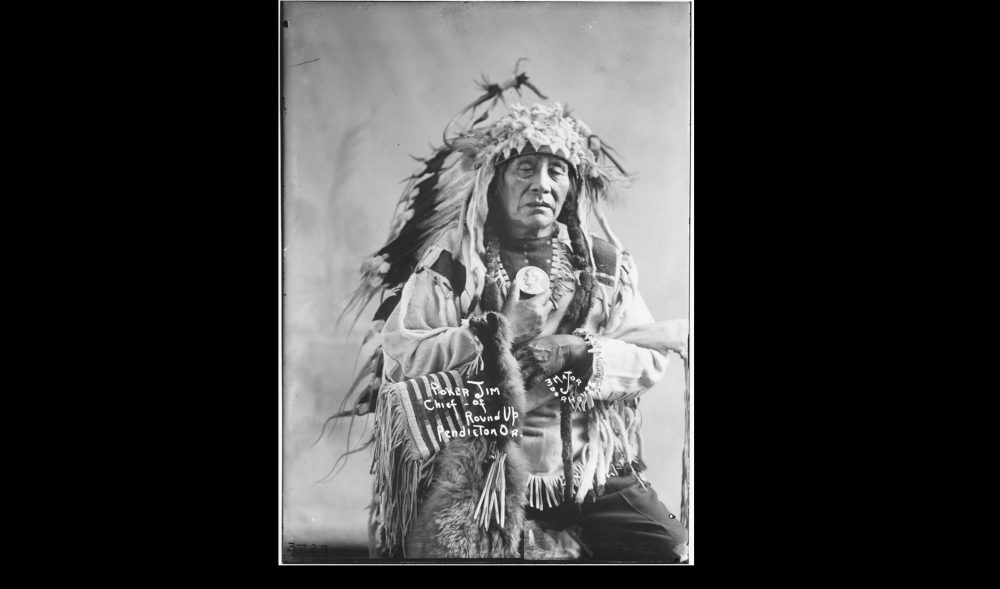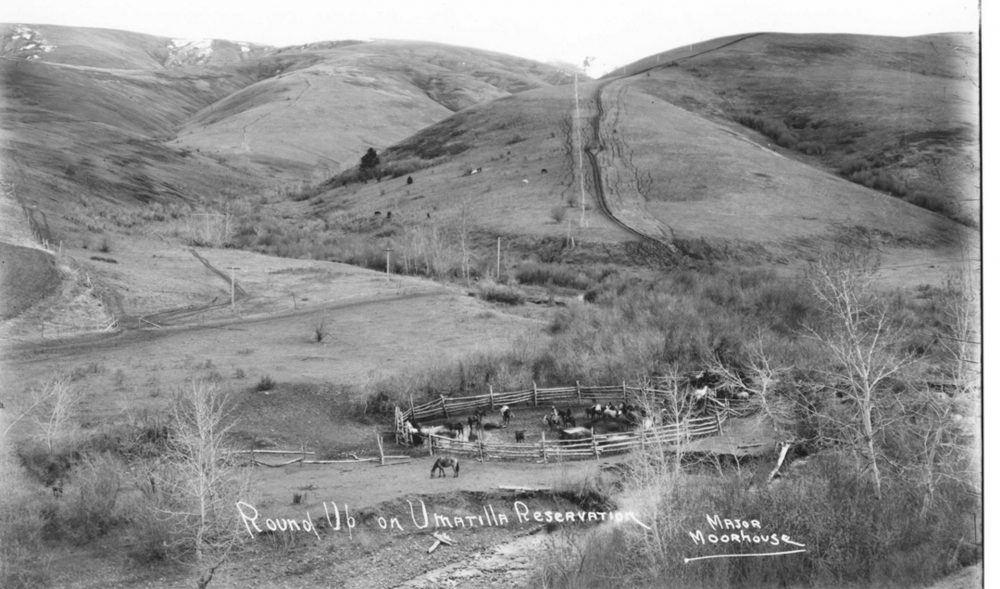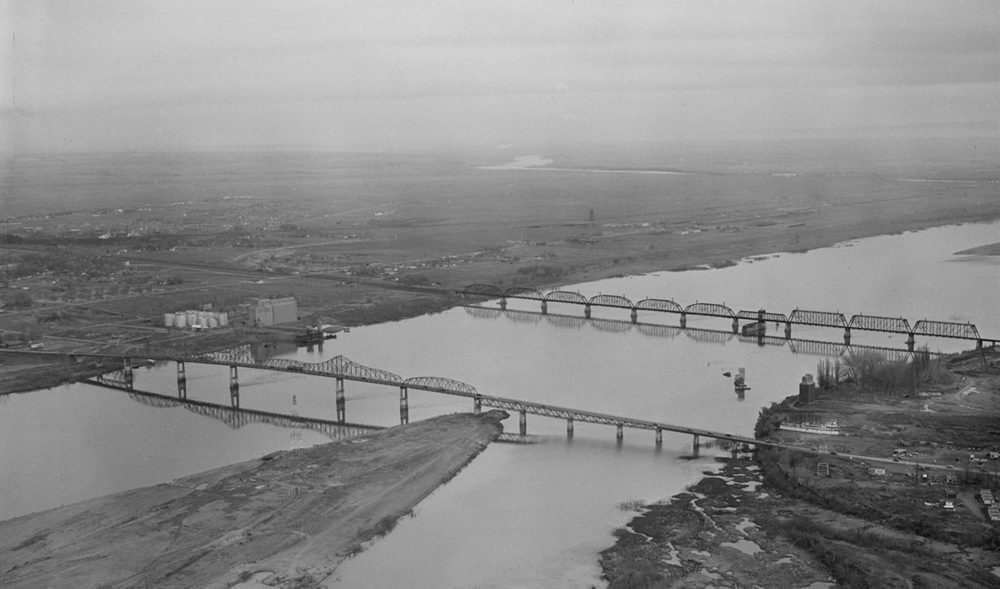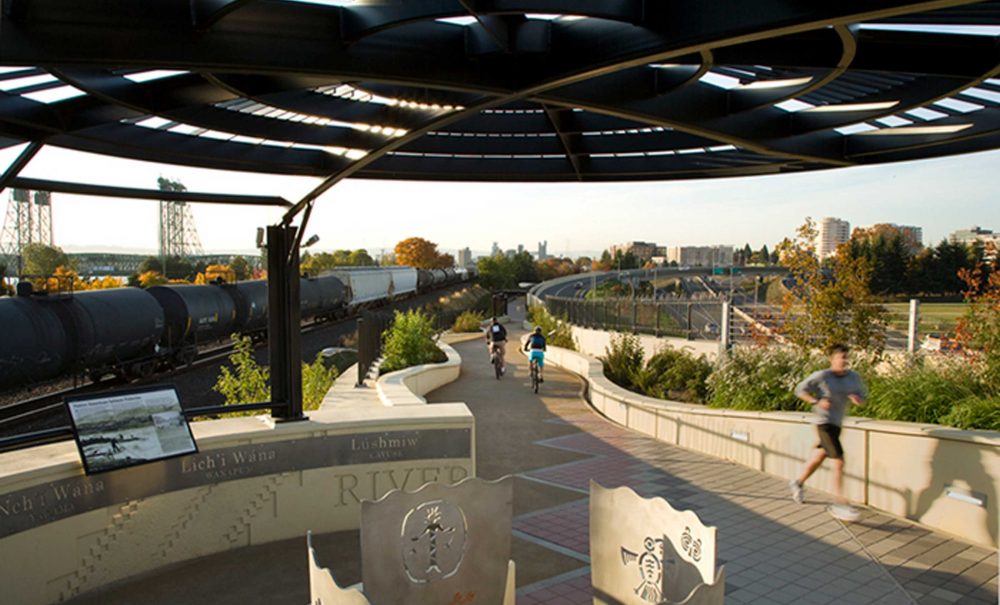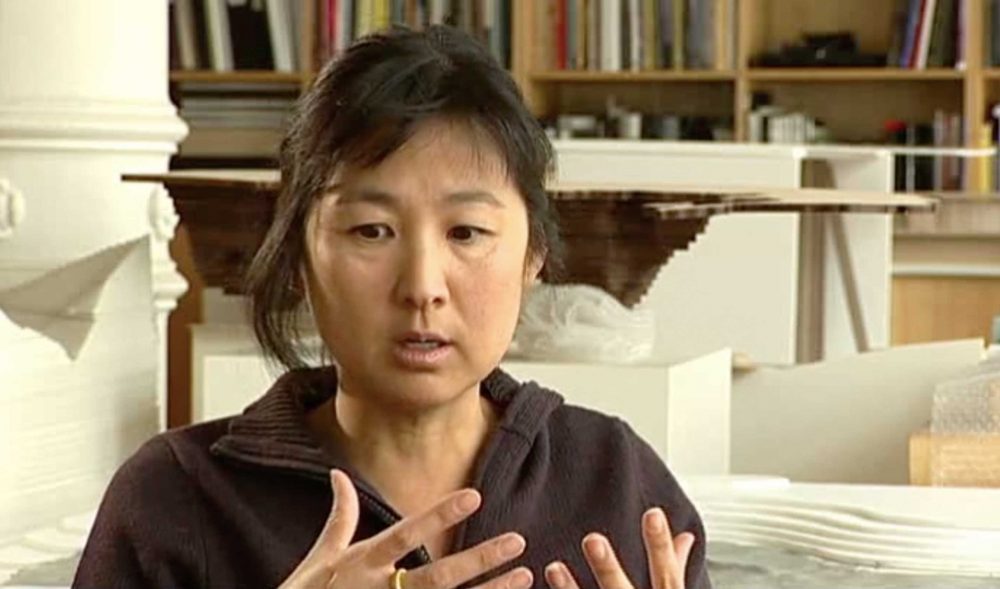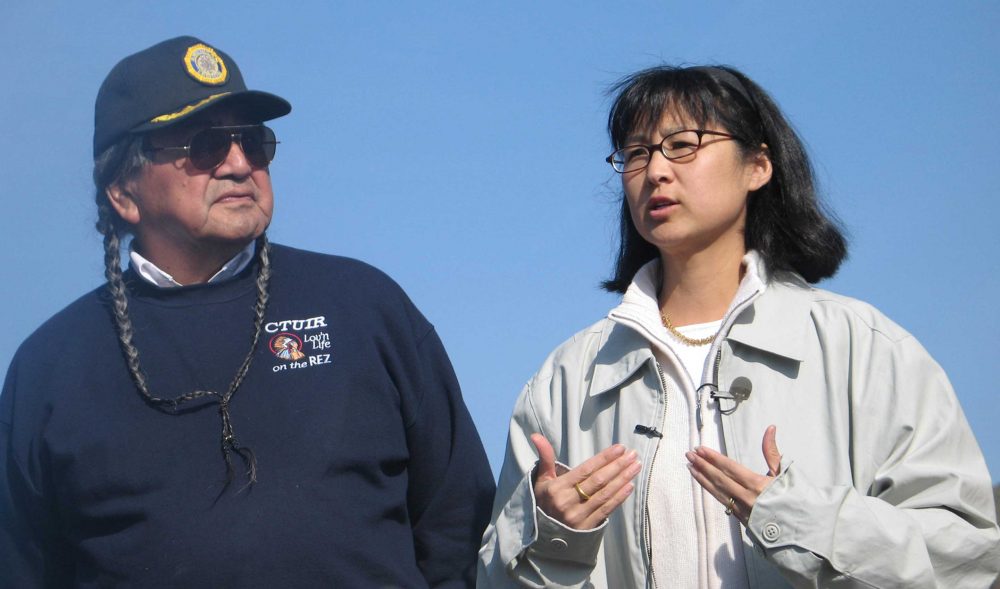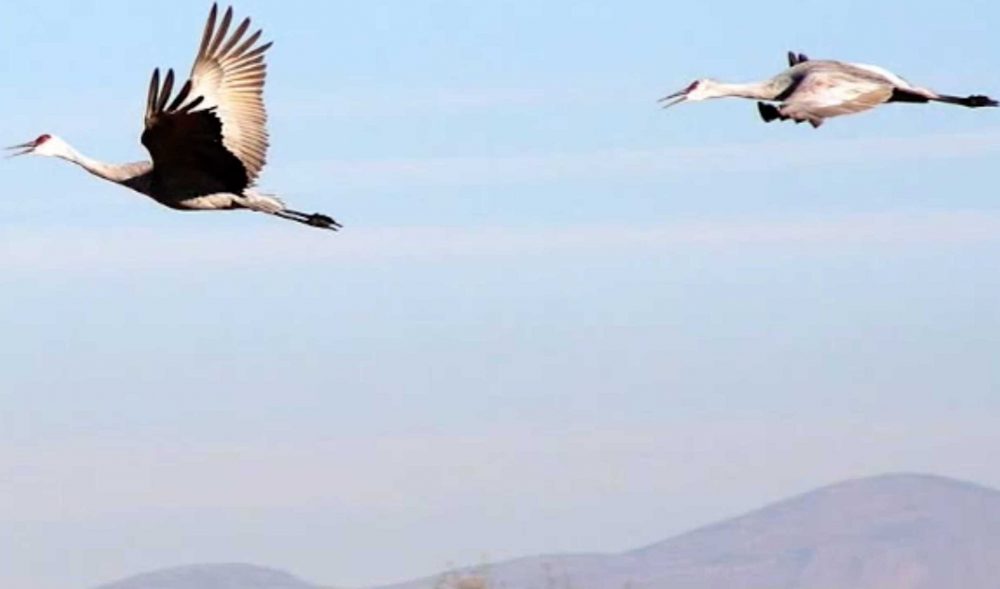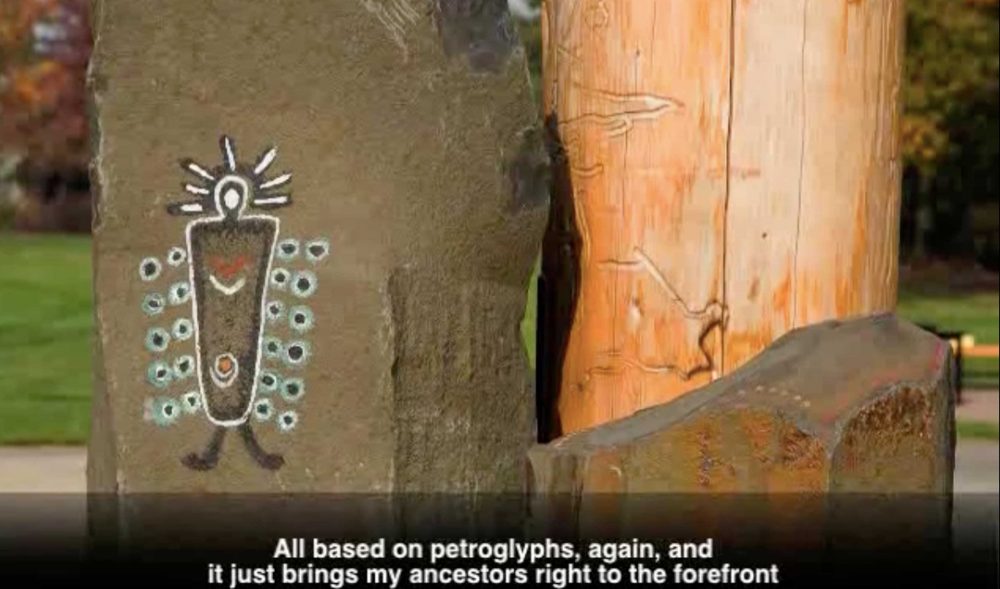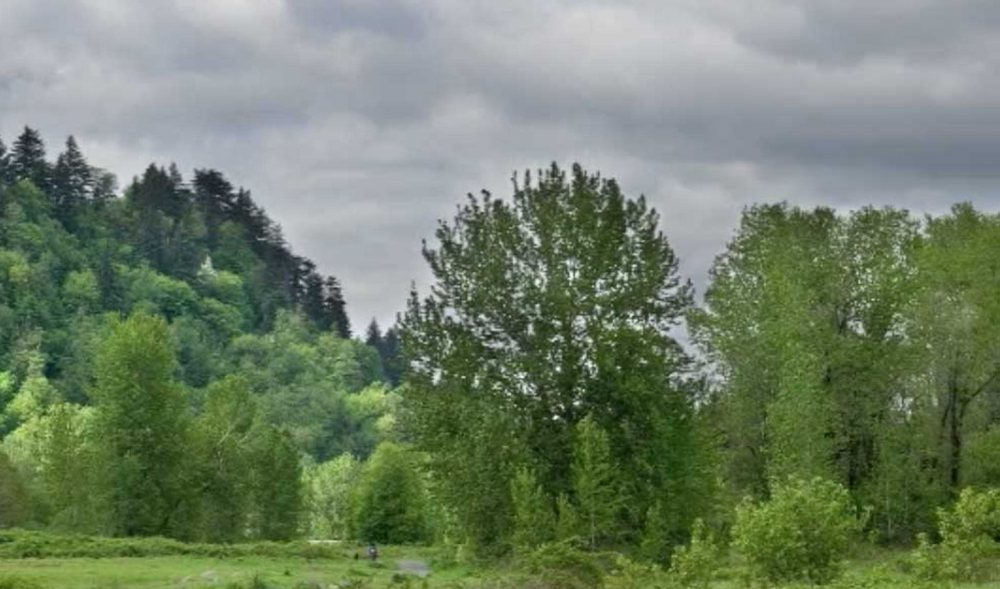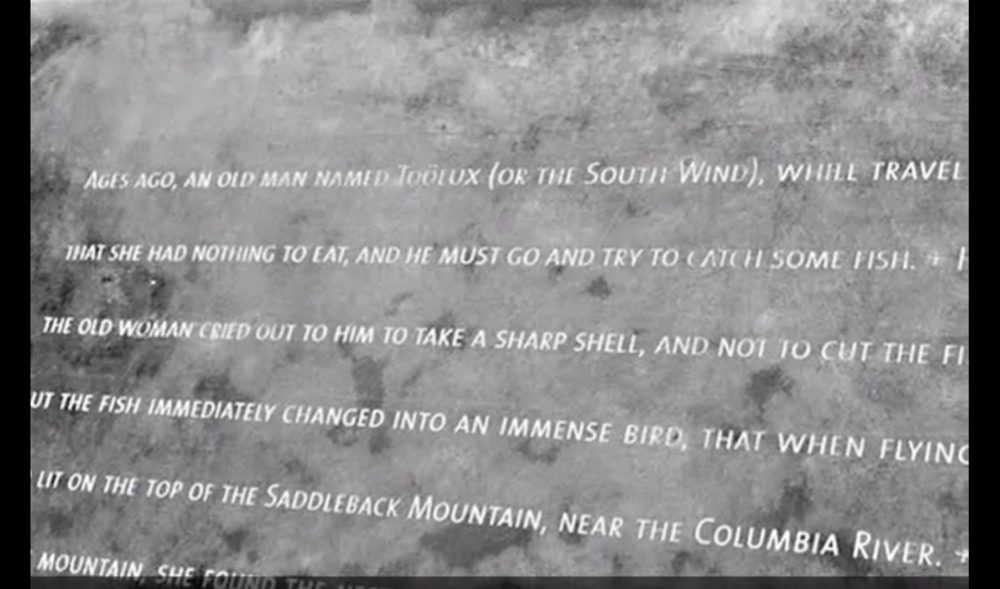Confluence Library
The site of Sacajawea State Park had been important for trade and kinship. The Corps of Discovery were led there by Sacajawea in 1805. By the 1870s, settlers took the land and local tribes were sent off to reservations.
The confluence of the Snake and Columbia Rivers was a major uniting force for tribes of the Columbia River basin. It became a major site for settlers later, as the waterways provided a convenient mode of transportation.
The Sacajawea State Park area saw a lot of change between the surrender of Chief Joseph and the revelation of the Hanford nuclear operations only a century later: railroads, dams, and plutonium replaced trade and family.
The Vancouver Land Bridge site was rich with biodiversity prior to settlers’ advancement. Seated on a floodplain near Mt. St Helens, it was home to savanna, hardwood forest, and prairie. Today it is home to Ft Vancouver.
Antone Minthorn (Cayuse, Nez Perce, Umatilla) talks about life on the Umatilla Reservation, the struggle for sovereignty, and Maya Lin. Fully subtitled. 2:32.
Jane Jacobsen talks about how Confluence was created as a response to the Lewis and Clark Bicentennial, and the decision by tribes to invite Maya Lin to design the artwork, as well as the importance of respect for places.
Lillian Pitt talks about She Who Watches, identity, culture, history, and honoring nature. She also talks about her artwork. Fully subtitled. 3:00.
George Kral talks about the process of restoration on the Sandy River Delta, and what farmers have to offer for this process. Fully subtitled. 2:16.
Ray Gardner tells the story of Qoots-hoi and Toölux, and how the first salmon caught turned into a thunderbird whose eggs formed humanity. He also talks about salmon catching ceremony. Fully subtitled.

